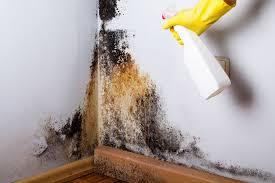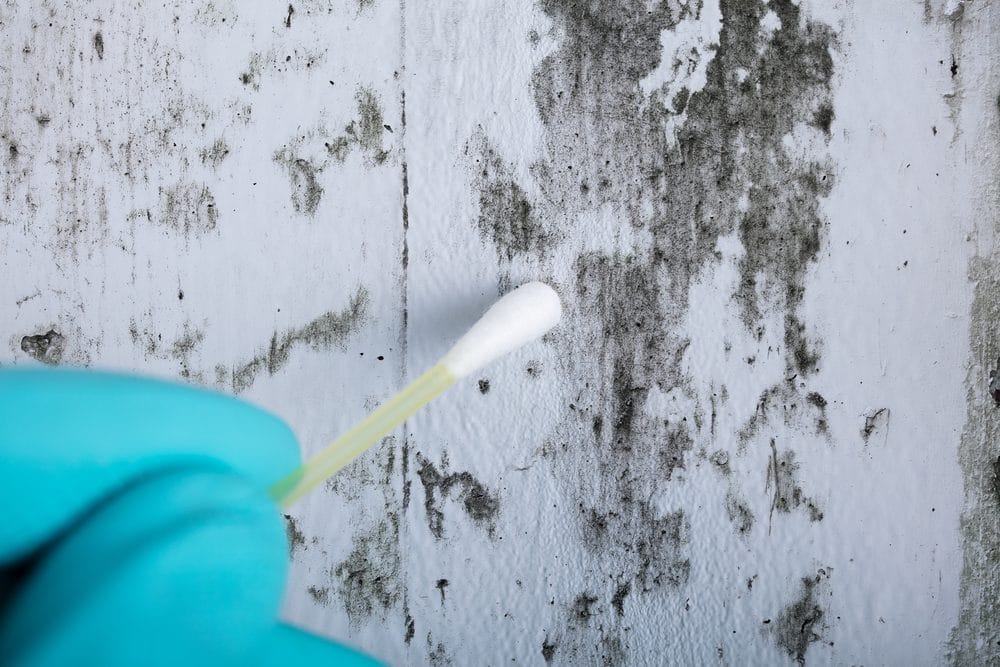As we spend a significant amount of our time indoors, the quality of the air we breathe is paramount to our health and well-being. This comprehensive guide aims to shed light on the importance of mold testing as a crucial step towards ensuring better indoor air quality. By understanding the nuances of mold detection, interpretation of results, and subsequent actions, we can create healthier living and working environments.
Mold testing is a process that many of us might not think about until we suspect a problem. It involves collecting samples from your indoor environment and analyzing them to identify the presence and type of mold. This is crucial because not all molds are visible or easily detectable by smell. Some molds lurk behind walls, under floors, or in other hidden places, potentially causing health issues without us even knowing. Mold testing is the first step in understanding if your indoor environment is safe or if action needs to be taken to improve it.
Understanding the Importance of Indoor Air Quality
Indoor air quality directly impacts our health, productivity, and comfort. Poor indoor air quality, contaminated with pollutants like mold spores, can lead to a range of health problems. These issues can be as mild as allergies or as severe as chronic respiratory conditions. Understanding the role of indoor air quality in our daily lives helps us appreciate the need for regular mold testing. It’s not just about preventing damage to our homes or buildings; it’s about protecting our health.
Signs and Symptoms of Mold Exposure
Physical Indicators
Persistent physical symptoms like coughing, sneezing, headaches, fatigue, and eye irritation can be clear signs of mold exposure. If you or your family members experience these symptoms without an apparent cause, it’s essential to investigate the possibility of mold presence.
Environmental Clues
Noticing a musty or damp smell, or visibly spotting mold growth on surfaces, walls, or ceilings, are environmental indicators that should not be ignored. These signs suggest that the indoor air quality may be compromised due to mold contamination.
When to Seek Mold Testing
If you observe the aforementioned physical symptoms or environmental clues, it’s advisable to consider professional mold testing. Mold can be a severe health hazard, and prompt action is necessary to identify and address the issue.
Importance of Indoor Air Quality
Maintaining good indoor air quality is essential for our overall health and well-being. Prolonged exposure to mold can lead to respiratory problems, allergic reactions, and potentially long-term health consequences. Maintaining good indoor air quality by identifying and addressing mold growth is vital for creating a safe and healthy living or working environment.
The Different Types of Mold Testing Methods
Air Sampling
Air sampling is a common mold testing method that measures the concentration of mold spores in the indoor air. This technique involves using specialized equipment to collect air samples, which are then analyzed in a laboratory to identify the types and quantities of mold present.\
Surface Sampling
Surface sampling tests for the presence of mold on various surfaces within a building, such as walls, floors, ceilings, or furniture. This method typically involves taking a swab or tape lift sample from the suspected area and sending it to a laboratory for analysis.
Bulk Sampling
Bulk sampling involves collecting and analyzing physical materials from the home or building, such as drywall, insulation, or carpet. This method is particularly useful when investigating the source of mold growth or determining the extent of contamination within building materials.

Choosing the Right Testing Method
The appropriate mold testing method depends on the specific situation and the goals of the testing. Air sampling is often recommended when assessing overall indoor air quality and potential health risks. Surface sampling is useful for identifying localized mold growth on specific surfaces. Bulk sampling is crucial when investigating the source of mold contamination within building materials.
Importance of Professional Mold Testing
While do-it-yourself mold testing kits are available, it is generally recommended to seek professional mold testing services. Professionals have the necessary equipment, expertise, and experience to accurately collect and analyze samples, ensuring reliable and comprehensive results.
Indoor Air Quality Considerations
Proper mold testing is essential for maintaining healthy indoor air quality. Identifying the presence and extent of mold growth allows for appropriate remediation strategies, ensuring a safe and comfortable living or working environment.
DIY Mold Testing Kits vs Professional Mold Testing
The market offers a range of DIY mold testing kits, promising quick and easy results. While these kits can be useful for a preliminary assessment, they often lack the accuracy and depth of professional testing. Professional mold testing involves trained experts who use sophisticated equipment to detect mold more accurately. They can also interpret the results and provide recommendations for remediation. When it comes to health and safety, professional testing is generally the more reliable choice.
Choosing the Right Mold Testing Company
Selecting the right mold testing company is crucial. Look for certified professionals with experience in mold inspection and testing. A reputable company should offer a detailed inspection, use advanced testing methods, and provide a comprehensive report of their findings. Asking for references and checking reviews can also guide your decision. The right company will not only identify the presence of mold but also help in addressing the underlying issues causing mold growth.
Preparing for Mold Testing
Preparing for mold testing involves a few simple steps to ensure accurate results. This includes closing windows and doors to maintain consistent indoor conditions and avoiding any activities that could disturb dust or mold spores, such as vacuuming. Informing the tester about any known mold sightings or water damage can also help in focusing the inspection on potential problem areas.
The Process of Mold Testing
The process of mold testing typically starts with a visual inspection to identify potential mold growth areas. Sampling then takes place, using one or more of the methods mentioned earlier. Samples are sent to a laboratory for analysis, where experts determine the type and concentration of mold present. This process is thorough and aims to uncover any hidden mold, providing a clear picture of your indoor air quality.
Interpreting Mold Testing Results
Interpreting mold testing results can be complex. The report will list the types of mold found and their spore counts. While some amount of mold spores is normal, high concentrations or the presence of certain toxic molds, like black mold, are concerning. Professional testers can explain these results in detail, advising on the necessary steps to take if mold levels are unhealthy.
Taking Action Based on Mold Testing Results
If mold testing reveals a problem, taking action is essential. This might involve professional mold remediation, fixing water leaks, or improving ventilation. The specific steps depend on the extent and type of mold found. Following through with recommended actions ensures that the mold issue is addressed effectively, protecting your health and property.
Preventing Mold Growth and Maintaining Good Indoor Air Quality
Preventing mold growth is key to maintaining good indoor air quality. Regularly checking for water leaks, ensuring adequate ventilation, and controlling humidity levels can significantly reduce the risk of mold. Additionally, periodic mold testing can catch any new growth early, before it becomes a larger issue. To create a healthier indoor environment, it is essential to take proactive measures.
Conclusion
Mold testing is a vital component of maintaining a safe and healthy indoor environment. By understanding the importance of indoor air quality, recognizing signs of mold exposure, and knowing the different testing methods, we can take informed steps towards prevention and remediation. Choosing the right mold testing services in Houston TX company and preparing adequately for the testing process ensures accurate results, guiding us in taking the right actions based on those findings.
For those in Denton County seeking professional mold testing services, Mold Testing Houston offers comprehensive solutions to identify and address mold-related issues, ensuring better indoor air quality for your home or business.
Frequently Asked Questions
How often should I test for mold?
Testing frequency depends on several factors, including past mold problems, existing health concerns, and any recent water damage. Generally, testing every one to two years is recommended, but more frequent testing may be necessary under certain conditions.
Can mold grow back after remediation?
Yes, if the underlying issues, like moisture problems, are not resolved, mold can grow back even after professional remediation.
Is it necessary to conduct mold testing if I can already see mold?
Yes, testing is still important to determine the type of mold and the extent of the infestation, which guides the remediation process.
Can I stay at home during mold remediation?
The severity of the mold problem determines the appropriate solution. For large infestations, it may be safer to stay elsewhere during the remediation process.
How can I prevent mold in my home?
Maintaining low humidity levels, ensuring proper ventilation, immediately addressing water leaks, and conducting regular inspections can help prevent mold growth.
Mold testing is not just about identifying mold; it’s about ensuring the health and safety of our indoor environments. By staying informed and proactive, we can protect ourselves and our loved ones from the potential hazards of mold exposure.
Discover a comprehensive guide to mold testing for improved indoor air quality. Take control of your environment with expert insights.






